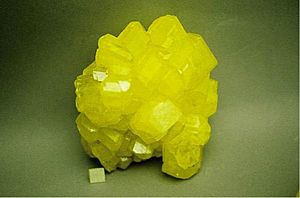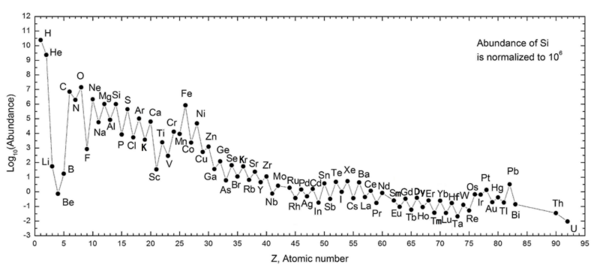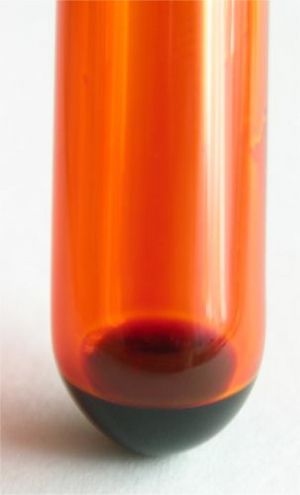Chemical element facts for kids


A chemical element is a pure substance that contains only one type of atom. If a substance has more than one type of atom, it's called a compound. Elements can be solids, liquids, or gases. The smallest part of an element is an atom. Atoms are made up of tiny particles called protons, neutrons, and electrons.
What makes each element special is the number of protons in its atoms. This number is called the atomic number. For example, all atoms with 6 protons are carbon, and all atoms with 92 protons are uranium. The number of protons also affects how many electrons an atom usually has. These electrons move around the atom in special areas called atomic orbitals. The way these electrons are arranged gives each element its unique chemical properties.
Elements are the basic building blocks for everything around us. When different elements combine, they can form molecules.
Today, scientists know about 118 different chemical elements. About 92 of these elements are found naturally on Earth. The rest can only be made in laboratories. For example, the human body is made up of 26 different elements! The last natural element discovered was Uranium in 1789. The first element made by humans was Technetium in 1937.
Scientists often arrange chemical elements in a special chart called the periodic table. Where an element is placed on this table tells us a lot about its properties and how it relates to other elements.
Contents
What are Chemical Symbols?
Every chemical element has its own special chemical symbol. These symbols are used all over the world, so scientists everywhere understand them, no matter what language they speak. Chemical symbols often come from the element's English or Latin name.
For example:
- Carbon has the symbol 'C'.
- Sodium has the symbol 'Na', which comes from its Latin name, natrium.
- Tungsten is 'W', from its German name, wolfram.
- 'Au' is the symbol for gold, from the Latin word aurum.
- 'Ag' is for silver, from the Latin argentum.
- Lead's symbol, 'Pb', comes from the Latin plumbum. This is also why a plumber is called a plumber – pipes used to be made of lead!
Some elements are even named after famous people, like einsteinium, which honors Albert Einstein.
How Elements Form Compounds
Elements can join together, or react, to form pure compounds. Common compounds include water, salts, and organic compounds. These compounds usually have a fixed makeup and their own unique properties.
It's interesting how different the properties of a compound can be from the elements it's made from! For example, sodium is a metal that burns when it touches water. Chlorine is a poisonous gas. But when they react together, they form sodium chloride (salt), which is harmless and we even eat it!
What are Mixtures?
Some elements, especially metals, can mix together in any amount to form new substances. These new substances are not compounds; they are called mixtures. For example, brass is a mixture of copper and zinc.
What are Isotopes?
Most elements found in nature have atoms with different numbers of neutrons. An isotope is a form of an element that has a specific number of neutrons.
For example, carbon has two stable isotopes that occur naturally:
- Carbon-12 has 6 neutrons.
- Carbon-13 has 7 neutrons.
- Carbon-14 has 8 neutrons and is a naturally occurring radioactive isotope of carbon.
Almost every element has at least two known isotopes.
How Elements are Classified
Elements can be grouped in different ways:
By Physical State
At normal room temperature and pressure:
- Most elements are solids.
- Only 11 elements are gases.
- Just 2 elements are liquids (Bromine and Mercury).
By Metal or Non-metal
Elements are also classified as metals or non-metals. There are many more metals than non-metals.
However, a few elements have properties that are somewhere between metals and non-metals. These are called semimetals, or metalloids.
Related pages
Images for kids
-
The chemical elements ordered in the periodic table.
-
Dmitri Mendeleev was a Russian chemist who created an early version of the periodic table.
-
Henry Moseley was a British physicist who helped arrange the periodic table by atomic number.
See also
 In Spanish: Elemento químico para niños
In Spanish: Elemento químico para niños






